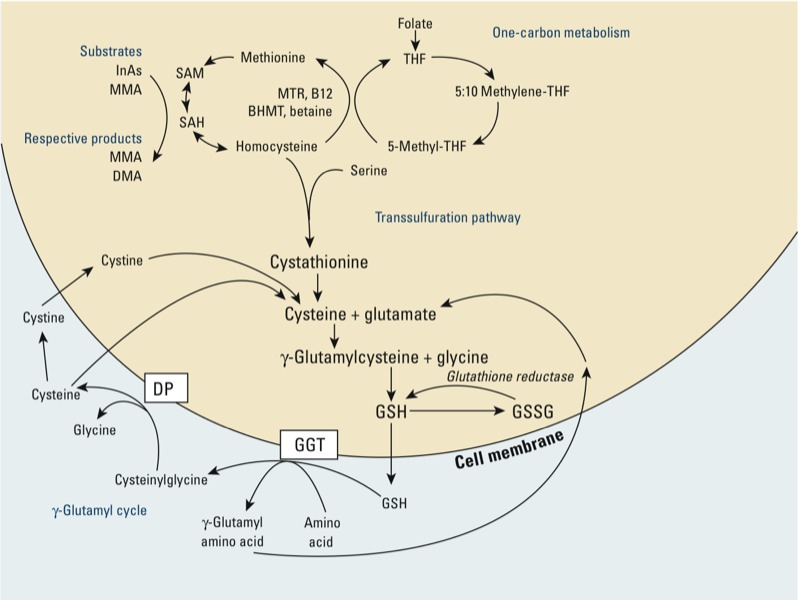Figure 1.

One-carbon metabolism and glutathione (GSH) synthesis and metabolism. Abbreviations: B12, vitamin B12; BHMT, betaine homocysteine methyltransferase; DMA, dimethylarsinic acid; InAs, inorganic As; MMA, monomethylarsonic acid. Folic acid is reduced to tetrahydrofolate (THF) and subsequently converted to 5-methyl THF. In a reaction catalyzed by methionine synthetase (MTR), the methyl group of 5‑methyl-THF can be transferred to homocysteine, generating methionine. Methionine is activated to form S‑adenosylmethionine (SAM), the universal methyl donor. The by-product of methylation reactions, S‑adenosylhomocysteine (SAH), is hydrolyzed to homocysteine. Homocysteine is either used to regenerate methionine or is directed to the transsulfuration pathway. GSH is a product of the transsulfuration pathway. GSH can serve as a continuous source of cysteine, which is extremely unstable, via the γ‑glutamyl cycle (adapted from Lu 2009). GSH is exported from the cell, and the enzyme γ‑glutamyltransferase (GGT) transfers the γ-glutamyl moiety of GSH to an amino acid, often cystine, producing cysteinylglycine and γ-glutamyl amino acid. The γ-glutamyl amino acid can be transported back into the cell and ultimately metabolized to glutamate. Cysteinylglycine is converted to cysteine and glycine by dipeptidase (DP). Cysteine is unstable extracellularly and can oxidize to cystine; both cysteine and cystine can be imported back into the cell for GSH production.
